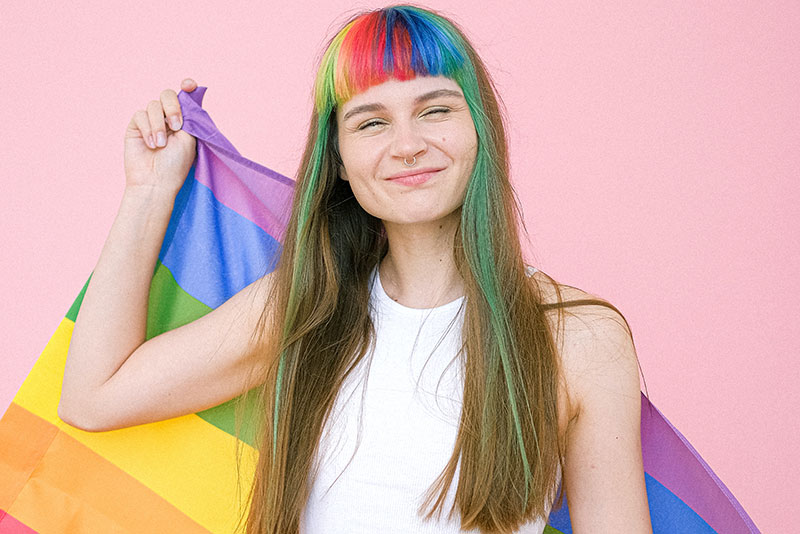By the Mental Health Foundation.

Note from the founder: This is both an immensely broad as well as sensitive topic, and we recognize there may be components missing or others that could be covered in greater detail. With the charter of the foundation being to raise awareness, as an ally the foundation wants to bring visibility to the topic of mental health within the LGBTQ+ community for those who may not be aware of the unique challenges facing its members.
By the Mental Health Foundation.
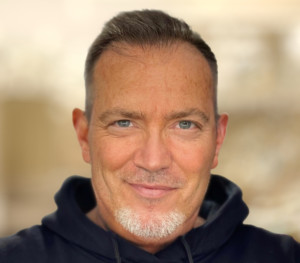
Note from the founder: This is both an immensely broad as well as sensitive topic, and we recognize there may be components missing or others that could be covered in greater detail. With the charter of the foundation being to raise awareness, as an ally the foundation wants to bring visibility to the topic of mental health within the LGBTQ+ community for those who may not be aware of the unique challenges facing its members.
During Pride month we want to bring awareness to some of the LGBTQ + Mental Health challenges facing many members of the community. Mental health challenges are unique for each individual, and LGBTQ+ community members can face their own set of mental health challenges.1, 2
In this article, we will discuss some of the mental health challenges that members of the LGBTQ+ community face and how you can support them.
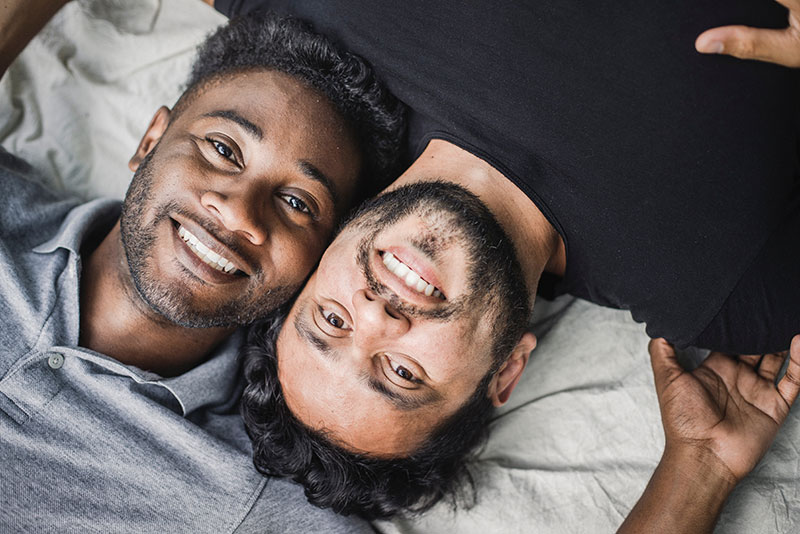
TABLE OF CONTENTS
What Impacts LGBTQ+ Mental Health

Because of the words and or actions from family, friends, and society at large, LGBTQ+ individuals can face many challenges when it comes to mental health. They are more likely to experience anxiety, depression, and other mental health problems than the general population, and as a result can be more prone to self-harm and suicidal ideations and / or attempts.3
These factors can lead to feelings of isolation, low self-esteem, shame, worthlessness, and substance abuse or dependencies, for which over half of existing treatment facilities do not have LGBTQ+ specific programs. 4 Key contributors to this increased vulnerability include the following:
- Prejudice & Discrimination
- Rejection
- Bullying
- Violence
- Homelessness
Prejudice & discrimination
Prejudice against the LGBTQ+ community members is a serious problem that continues to affect millions of people around the world. Although there has been some progress in recent years, many LGBTQ+ individuals still face discrimination and violence on a daily basis.
In many countries, they are not legally protected from discrimination or hate crimes, and in some cases they may even be actively persecuted by the government.
This leaves them vulnerable to abuse both at home and in public and makes it difficult for them to live their lives openly and freely. As a result, many LGBTQ+ people struggle with mental health issues.5, 6
Rejection
Being rejected by your family is one of the most painful experiences any person can go through. Many members of the LGBTQ+ community have difficulty coming out or dealing with family members who do not accept them and would rather conform to societal norms to avoid being rejected.
Every year, countless young people who come out are kicked out of their homes or disowned by their families. This type of rejection can have a devastating effect on a person’s mental and emotional health. According to a study conducted by the Family Acceptance Project, LGBTQ+ young adults who experienced high levels of rejection from their families were more than eight times as likely to attempt suicide as those who did not experience such rejection.7

They were also more likely to engage in risky behaviors, such as substance abuse and unsafe sex. The pain of family rejection can last a lifetime and may lead to other conditions like internalized homophobia, but there is hope.8 Organizations like the Family Acceptance Project offer support and resources for LGBTQ+ individuals and their families.
By increasing understanding and acceptance, we can help reduce the incidence of family rejection and its harmful effects.
Bullying
Being a teenager is hard enough, but for LGBTQ+ teens, the challenges are even greater. In addition to navigating the typical pitfalls of adolescence, they must also contend with discrimination and bullying from their peers.
Unfortunately, this type of abuse is all too common in schools. Studies have shown that LGBTQ+ students are twice as likely to be bullied as their non-LGBTQ+ counterparts. They are also more likely to experience verbal and physical harassment, social exclusion, and other forms of mistreatment.

Bullying can also manifest as exclusionary behavior, such as refusing to let someone use the restroom that corresponds with their gender identity. This type of bullying can be especially damaging, as it reinforces the message that LGBTQ+ individuals are somehow lesser than their peers.
Schools that have adopted a formal alliance support framework have seen a more positive climate for LGBTQ+ students which has resulted in decreases in bullying, suicidality substance use, and increases in attendance and grades.9, 10
Bullying is not limited to elementary or high settings and may be experienced in higher education, professional, sporting environments, and more.
Violence
Violence and abuse targeting LGBTQ+ is a pattern of hostility, intimidation, or physical violence directed at people who identify as lesbian, gay, bisexual, transgender, or queer. This type of violence can occur between family members, fellow students, or strangers on the street.

The abuse can take many forms, including physical abuse, sexual assault, emotional abuse, financial abuse, hate speech, and even murder. It is important to remember that LGBTQ+ people are not responsible for the violence directed at them. No one deserves to be attacked because of prejudice, fear, or hatred.
LGBTQ+ violence is often motivated by bias or hatred towards LGBTQ+ people, and it can have a profound impact on victims. In addition to the physical and emotional damage caused by the violence itself, LGBTQ+ victims of violence may also experience feelings of isolation, fear, and mistrust.
They may also be reluctant to seek help from law enforcement or other agencies due to concerns about being further victimized or discriminated against. As a result of all these factors, LGBTQ+ victims of violence often have nowhere to turn for help. This leaves them vulnerable to further abuse and can prevent them from getting the support they need to heal from the trauma of the violence.
Because of the attitudes in society in previous generations, many older members of the LGBTQ+ community may have spent the majority of their lives concealing their identity to avoid harassment. Today, while many live a more accepting and tolerant time, and younger LGBTQ+ may experience more freedoms, BIPOC members may still experience racism on top of all the other challenges they face on a daily basis. 11, 12
Homelessness
The homeless population is a diverse one, and LGBTQ+ individuals are disproportionately represented among its ranks. In fact, studies have shown that LGBTQ+ individuals are three times more likely to experience homelessness than their straight counterparts.
There are a number of factors that contribute to this trend. For instance, many LGBTQ+ youth are rejected by their families and wind up on the streets.
Additionally, discrimination and violence against LGBTQ+ individuals can lead to job loss and difficulty finding new employment, making it hard to maintain stable housing. The lack of supportive resources also makes it difficult for LGBTQ+ people to find shelter that meets their needs.
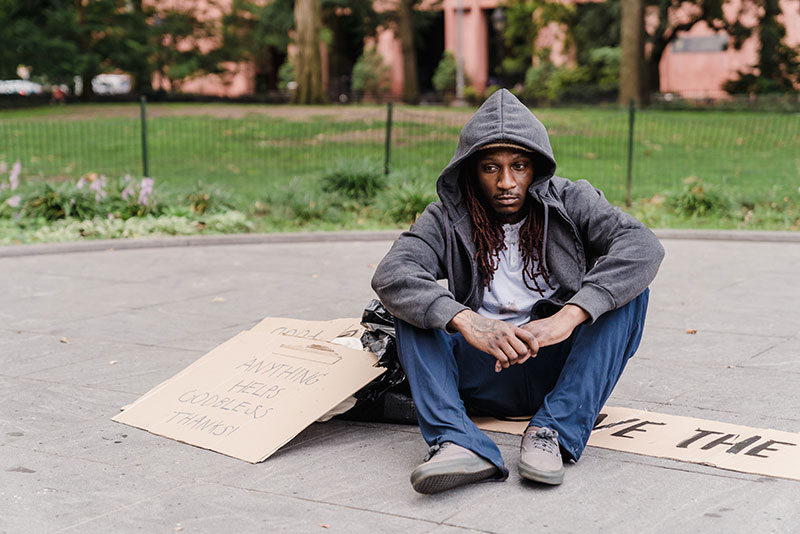
As a result, LGBTQ+ individuals often face unique challenges when it comes to finding acceptable housing. This issue is compounded by the fact that many shelters are not equipped to deal with the specific needs of LGBTQ+ people, such as providing gender-neutral bathrooms and safe spaces for those who identify as transgender or non-binary.
LGBTQ+ people can find themselves struggling to find safe and affirming places to sleep at night. Any individual experiencing homelessness can find themselves subject to an increased likelihood of anxiety, depression, and a number of other conditions because of the stigma, how they are treated by the general public and because they can often be at risk physically.
In order to address this problem, it is essential to provide more resources specifically for LGBTQ+ people who are homeless or at risk of becoming homeless. This could include everything from specialized shelters to increased access to employment and housing assistance programs.
Oftentimes, LGBTQ+ community members may not seek help because they feel that their sexuality or gender identity is not accepted by society. In addition to issues this can create for an individual, the result of not getting counseling or therapy can have a compounding effect as well as lead the person to experience extreme isolation.
Tips for Taking Care of Your Mental Health:
- Find a therapist who is knowledgeable about and sensitive to LGBTQ+ issues.
- Join an LGBTQ+ support group or organization.
- Educate yourself about LGBTQ+ mental health issues.
- Be accepting of yourself and others.
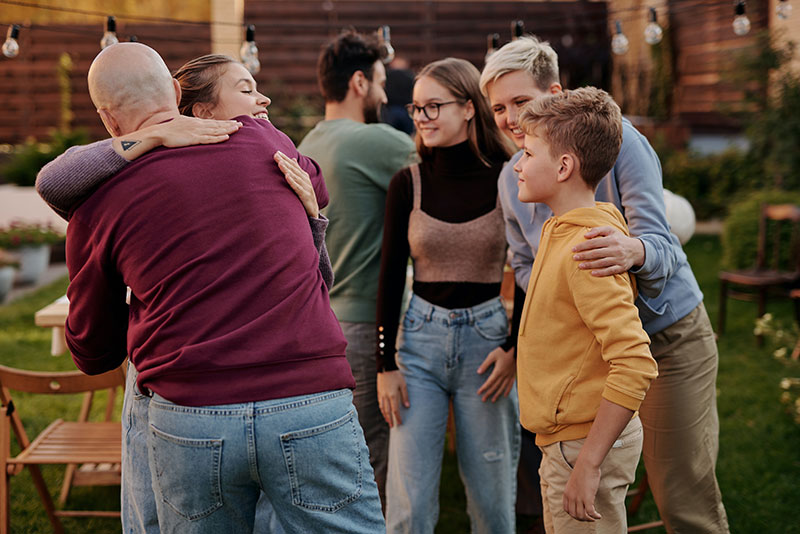
How to Support Your LGBTQ+ Family and Friends Mental Health:
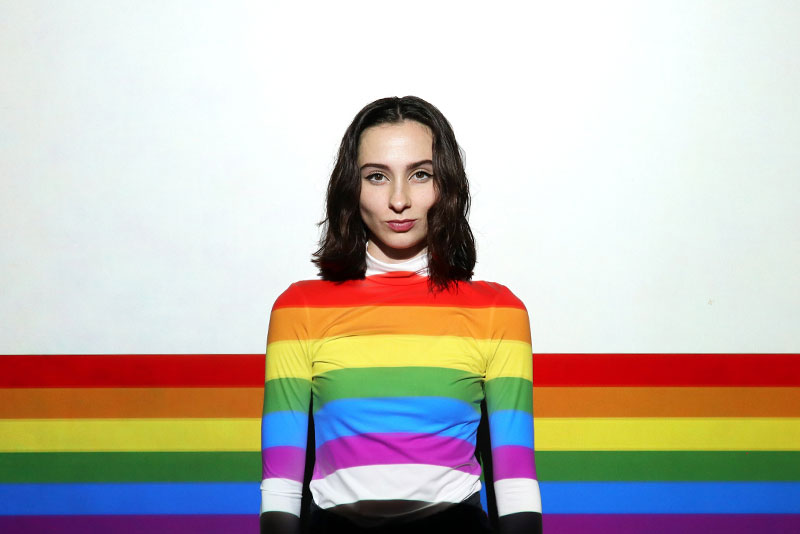
- Listen and believe what they say about their experiences.
- Educate yourself and others about LGBTQ+ mental health.
- Be an ally – stand up against discrimination and bigotry. We must stand together to denounce all forms of violence against LGBTQ+ people and work to create a world where everyone can live safely and free from fear.
- Provide a safe space – One way to help reduce LGBTQ+ violence is to create safe spaces where people can go for help. These safe spaces can be physical locations, such as community centers or shelters, or they can be online resources, such as support groups or forums. By creating these safe spaces, we can help LGBTQ+ people feel less isolated and more connected to a supportive community.
Unfortunately, many LGBTQ+ students feel unsafe in school and are reluctant to report incidents of bullying. This can make it difficult for educators to address the problem. One way to tackle LGBTQ+ bullying is to create a more inclusive environment in schools. This can be done by ensuring that all students feel welcomed and respected, regardless of their sexual orientation or gender identity.
In addition, educators should be trained to identify and respond effectively to instances of LGBTQ+ bullying. By taking these steps, we can help ensure that all students feel safe and supported in school.
For those with a friend or LGBTQ+ family member, even if you don’t see eye to eye on everything, talk to them to find out ways to help them feel supported and loved.
Mental Health Resources for LGBTQ+ Individuals
The LGBTQ+ mental health community has long been underserved and neglected, but the good news is that there are mental health professionals who are beginning to understand the needs of the LGBTQ+ community. With the right support, LGBTQ+ individuals can lead happy, healthy, and fulfilling lives.

Support organizations and resources.
- The Trevor Project is another great resource that provides crisis intervention and suicide prevention services to LGBTQ+ young people ages 13-24.
- GLAAD Gay & Lesbian Alliance Against Defamation offers a wealth of resources for support across multiple categories.
- The National Suicide Prevention Lifeline provides 24/seven support for those in crisis.
Remember, you are not alone. There is help available.
If you or someone you know needs immediate mental health-related attention, please call the National Suicide Prevention Lifeline at 1-800-273-TALK (8255) or text the Crisis Text Line (741-741) with the word HOME. Both services are free and available 24 hours a day, 7 days a week. All calls are confidential.
If you think someone is an immediate danger to themselves or others, please call 911 and ask for first responders trained in mental health crises.
Subscribe to get notifications about future articles.

